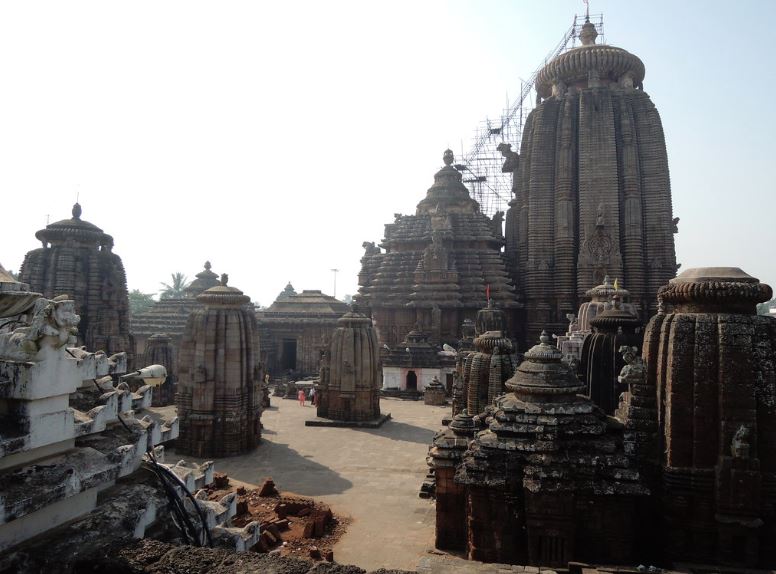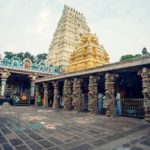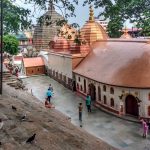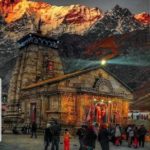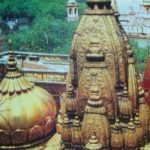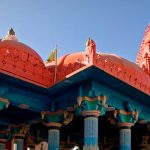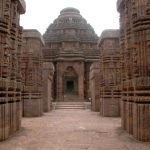If you are visiting the city of Bhubaneshwar, do not miss out on a visit to the ancient Lingaraj Temple. The largest temple in the city, it is dedicated to Lord Shiva and is built in the Kalinga style of architecture. Approximately 6000 Hindu devotees visit the temple every day, and the Shivratri festival welcomes hundreds of thousands of visitors each year.
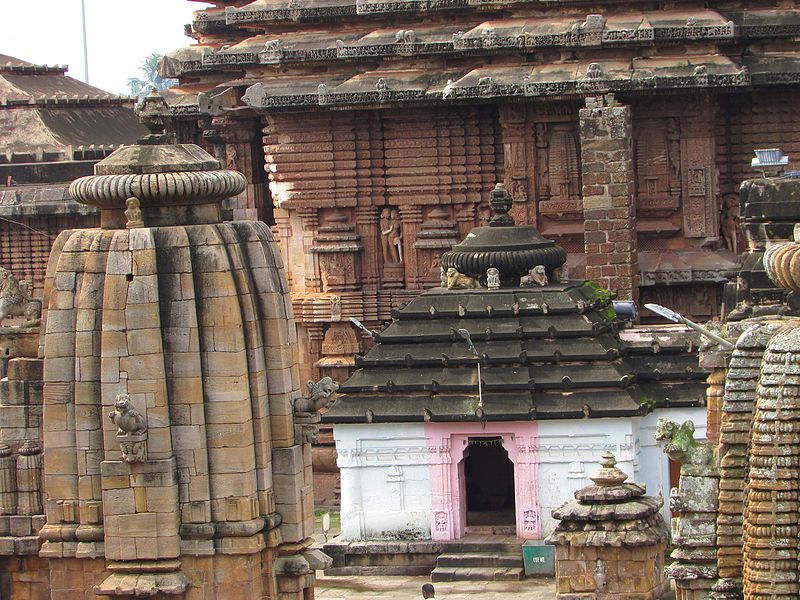
History of Lingaraj Temple
The Lingaraj temple story is an interesting one and dates back to the eleventh century. According to belief, the Somavamsi kings started building the temple, and the kings of the Ganga dynasty later completed it. In particular, the worship of Lord Vishnu in his Jagannath avatar grew during the reign of the Ganga kings. For this reason, Hindus worship both Shiva and Vishnu at the Lingaraj temple Bhubaneshwar in a combined form named Harihara. Some Sanskrit texts even suggest that parts of the temple were built back in the sixth century.
The Lingaraj temple shivling was originally situated under a mango tree, or Ekamra, and hence Bhubaneshwar acquired the name Ekamra Kshetra. It is made of granite and is a natural stone that has not been carved or modified by humans. It is one of 64 such ‘natural’ shivlings in India and is a particularly holy form of Lord Shiva. The temple priests bathe the shivling with milk, water and clarified butter every day. There is also a deity of Goddess Parvati, Shiva’s wife, as well as images of Lord Kartik and Lord Ganesh. The central tower of the temple stands at 180 feet tall. The entire temple features beautiful stone carvings of women, couples, flowers and animals. The temple courtyard also plays hosts to multiple small shrines.

Worshiping At The Temple
The Lingaraj temple of Orissa is an active place of worship and thus permits only Hindu visitors to enter and pay their respects. The temple priests ablute the Lingaraj image several times a day and offer purified meals, some of which they later distribute among devotees as Prasad. According to Hindu beliefs, the water of the river that emerges from the temple and enters the Bindusagar Tank have curative powers. Many devotees thus bathe in the tank to treat their illnesses, particularly during religious occasions.
Festivals at The Temple
The most important festival of the Lingaraj temple Bhubaneshwar is the Shivratri festival, which takes place in the Hindu lunar month of Phalgun. The festival celebrates the day when Lord Shiva slayed a dangerous demon. On this day, devotees spend the whole night in prayer and fasting, while also offering bel leaves to the Lingaraj. They break their fast when the priests light a special lamp outside the temple. Another important festival is the Ratha Yatra. On this day a chariot carries the deity to the Rameshwar Deula temple. Thousands of devotees follow in its wake while pulling ornate chariots of their own. The Candan Yatra is a unique 22-day festival in which the temple priests and employees embark on a barge in the Bindusagar Tank while anointing their bodies with sandalwood paste as protection from the heat. Dances and communal feasts also take place on this day.
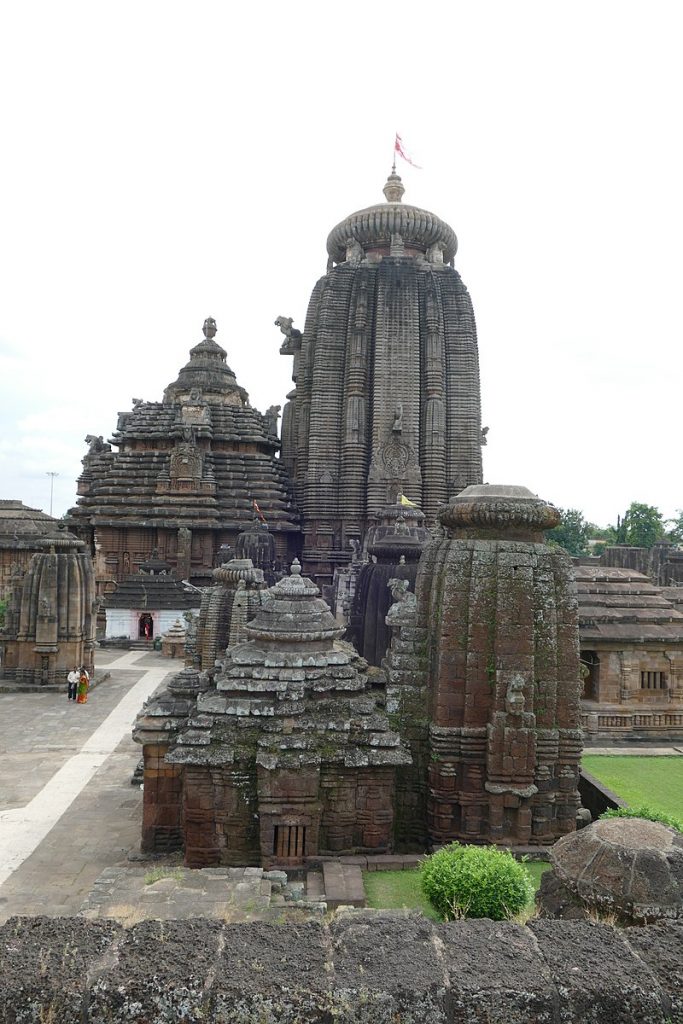
Facts About Visiting Lingaraj Temple
When visiting the Lingaraj temple, keep the following useful facts in mind.
- The best time to visit the temple is between January and March when the Shivratri celebrations are in full swing.
- There are several bus services, both public and private, that carry visitors to the temple. You can also book taxis from the train station or airport.
- The Lingaraj temple darshan timings are from 6:00 AM to 9:00 PM daily, except between 12 noon and 3:30 PM when the priests offer food to the deity. The Lingaraj temple timings are the same on all days of the week.
- Menstruating women and those who have experienced birth or death in their families in the previous twelve days are not allowed inside the temple.
- Ripe plantains and coconuts are the typical items you can bring as offerings in the Lingaraj temple.
- Non-Hindu visitors are not allowed to enter the temple. However, you can see the outside from a special viewing dock at the back of the complex.
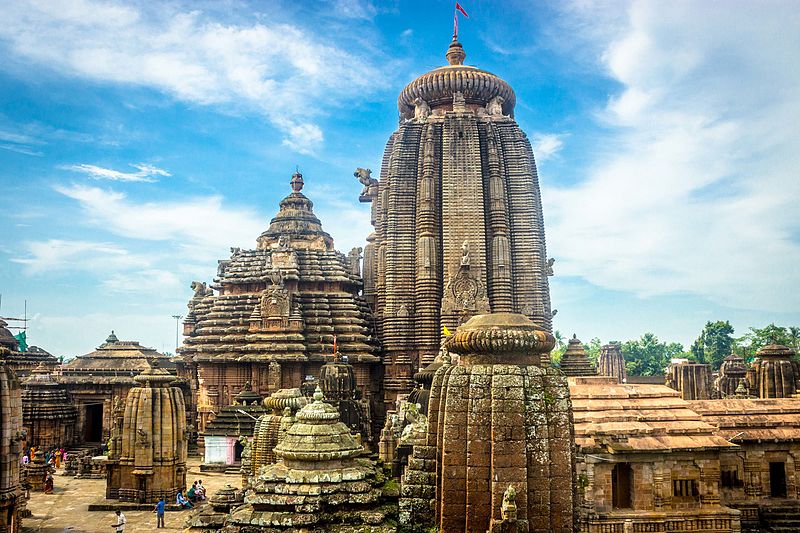
For a Hindu devotee, few temples are holier or more significant than others. Lord Shiva assumes one of his most noble avatars here as an amalgamation with Lord Vishnu. If you are travelling through Orissa and wish to experience true spiritual sanctity, do not miss a visit to this magnificent temple.




